
As interest in personal ancestry grows, DNA testing services like Living DNA and AncestryDNA have become popular tools for exploring genetic heritage. While both platforms offer valuable insights, choosing the right one depends on your specific goals.
This guide breaks down the key differences between the two, focusing on features, accuracy, database size, privacy, and user experience to help you make an informed choice.
Living DNA stands out for its deep maternal and paternal lineage tracing, with a global breakdown across 80 regions—including some areas other tests don’t cover. It’s a good fit if you’re looking for a detailed view of your ancestral origins.
AncestryDNA offers broader genealogical tools and has the largest user database, increasing your chances of finding relatives. Its family tree builder and access to historical records make it ideal if you’re also interested in building out a full picture of your family history.
Unique Features
Every human can trace his or her origins all the way back to Africa, and Living DNA’s Full Ancestry Report arguably provides more detail about your African geographical origins than any other DNA test. It also breaks its ancestry results down into particularly high resolution for other areas, including the British Isles and Europe.
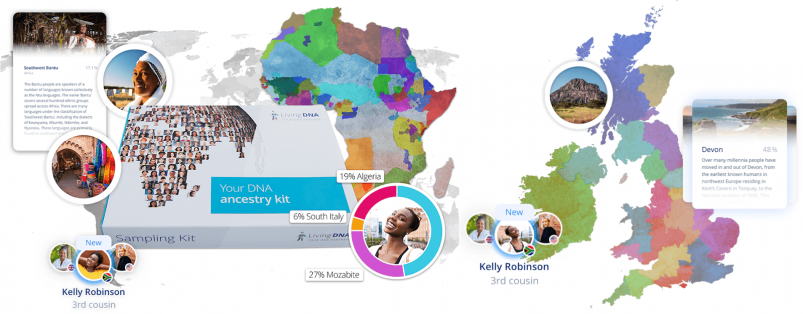
Despite the focus on some specific regions, Living DNA in total compares your DNA to that of people from over 150 regions worldwide.
Living DNA’s value-added ancestry features:
- Specialist African Ancestry for 72 sub-regions
- Specialist British Ancestry for 21 sub-regions
- Specialist European Ancestry for 9 sub-regions
AncestryDNA can also tell you where your ancestors lived, down to the specific county and city:
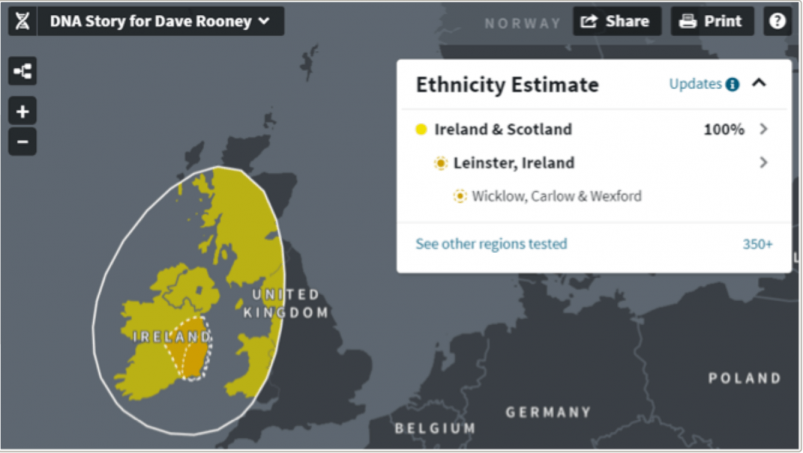
As well as receiving detailed ethnicity estimates (with percentages), you can also see a curated timeline or historical events in your ancestral regions.
AncestryDNA’s value-added ancestry features:
- Over 500 geographical regions, some as specific as a city
- Percentages and charts to help you conceptualize your ethnicity estimate
- Expert-curated timeline
Ancestor Migrations
Living DNA offers an in-depth ancestry test that examines three types of DNA: autosomal, Y-DNA, and mtDNA. Autosomal DNA is useful for tracing recent ancestry across several generations. Y-DNA, which is only tested in males, and mtDNA, available to all biological genders, enable the tracking of paternal and maternal lineages across many generations.
Through the identification of rare mutations in these DNA types, researchers can assign individuals to distinct haplogroups corresponding to their family lines. This process helps to uncover the ancient migration paths of ancestors, including their origins in Africa and other areas. Here’s an example:
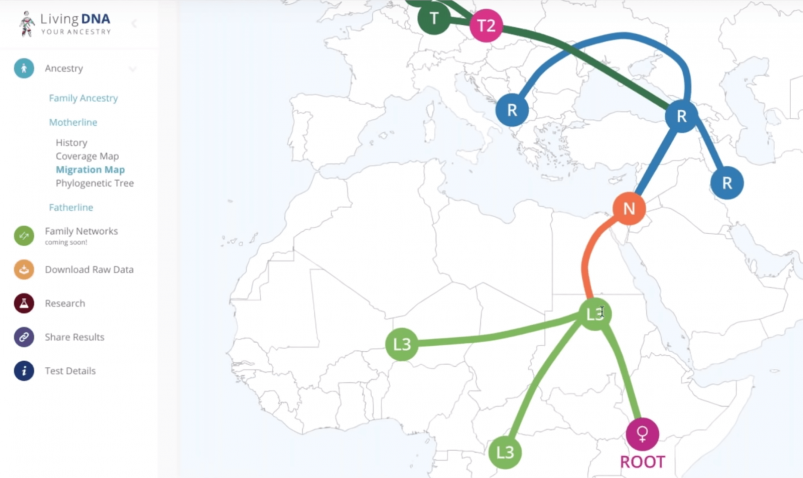
Living DNA’s value-added ancient ancestry features:
- Maternal lineage testing and haplogroup assignments
- Paternal lineage testing and haplogroup assignments
- Migration mapping
How accurate is AncestryDNA in comparison? AncestryDNA does not conduct Y-DNA or mtDNA analysis, which means it cannot determine an individual’s ancient haplogroup(s). Instead, the service offers migration mapping features that utilize a vast historical records database. This information sheds light on the probable reasons and patterns of family movement in recent history, rather than ancient times. For example, it could tell you that your forebears left Ireland in the 1850s due to famine:
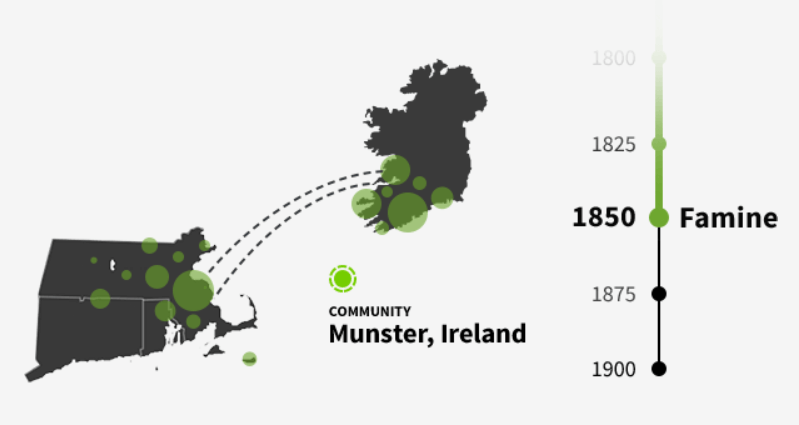
AncestryDNA’s value-added recent ancestry features:
- Migration mapping put in the context of historical events
Family Tree
Family tree building is one of the things that made AncestryDNA famous, originally starting off as a genealogy service with a large historical record database.
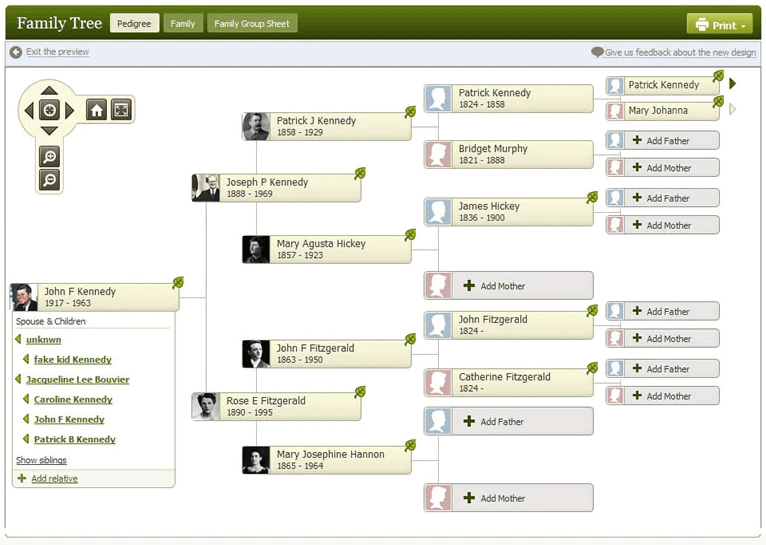
Nowadays, when you take an AncestryDNA test (and opt-in to the service), your DNA can be compared with other customers in the company’s database. In this way, you can be presented with potential biological living relatives to add to your tree. DNA matches and historical records are a powerful combination when it comes to building a family tree.
AncestryDNA’s value-added DNA family tree features:
- Explore over 20 billion historical records (with subscription)
- Upload a Genealogical Data Communications (GEDCOM) data file to pull in existing family tree data
- Link overlapping trees with one another
However, this does come at a price: to access all of AncestryDNA’s records, you’ll need to pay for a genealogy subscription.
In comparison, Living DNA’s “Family Networks” feature can assist in identifying DNA-matched relatives to help build out a family tree. However, it lacks the depth and specialization of a dedicated family tree-building service. Unlike AncestryDNA, it doesn’t offer access to an extensive database of historical records, which limits its usefulness for more comprehensive genealogical research.
Living DNA’s value-added DNA family tree features:
- Visualize potential relatives based on shared DNA
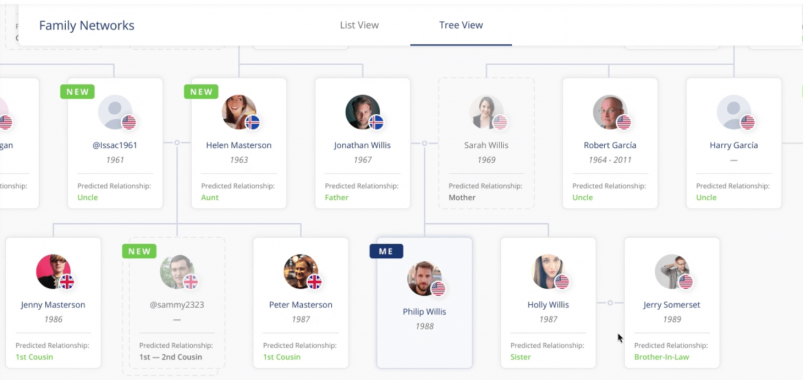
Locating Lost Relatives
As already hinted, Living DNA and AncestryDNA both do DNA matching of potential relatives from the companies’ customer databases. Living DNA initially looks like a better bet because it can conduct DNA matching based on maternal DNA (mtDNA) and paternal DNA (Y-DNA), whereas AncestryDNA only tests your autosomal DNA.
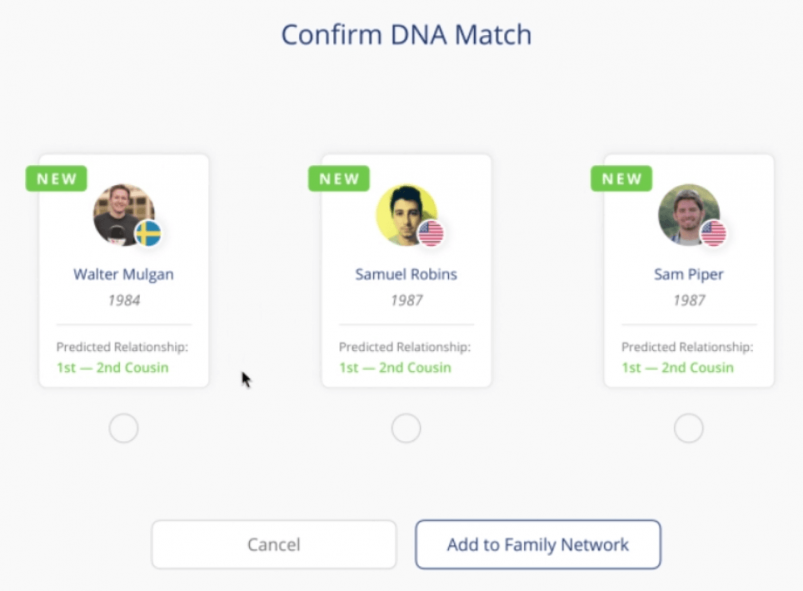
A common criticism from customers is that Living DNA provides fewer matches compared to other services like AncestryDNA. On its customer support page, Living DNA argues that the focus is on helping users connect with a key individual who may not be available in other databases. We believe that the number of matches is still a relevant factor.
Living DNA’s value-added DNA matching features:
- Family Networks tool connects you with potential biological relatives
- Discover genetic matches from all over the world
AncestryDNA’s many more members mean many more opportunities to find DNA-matched long lost relatives. There are several easy ways to organize your matches, including color coding, custom labeling, and other tools to help you visualize your connections.
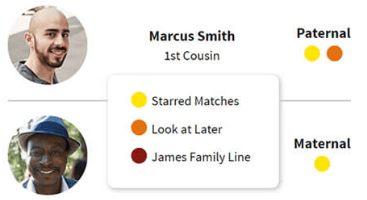
The private, secure messaging system allows you to reach out to your potential relatives providing they’ve consented to be contacted.
AncestryDNA’s value-added DNA matching features:
- Easily organize your matches
- Message your matches for free
- Add DNA Matches to your Family Tree
Resources and Services
The customer experience is one of our key criteria for deciding which test to suggest. Customer experience can take various forms, from the information provided on the testing company’s website to the price you pay for the products.
Living DNA’s website is well laid out and highly informative, and this company also offers a seven-day free course to teach you about DNA:
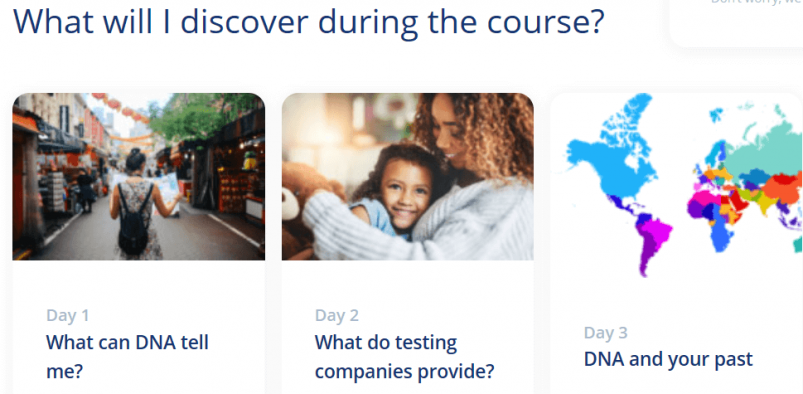
Living DNA’s value-added customer experience features:
- A seven-day free course
- Online customer support and education center
- Good value for money
After extensive exploration of numerous DNA testing company websites, AncestryDNA’s website stands out as my top choice. Its design achieves a harmonious blend of simplicity and comprehensive information, ensuring a user-friendly browsing experience. An exceptional feature is the Ancestry Academy, housing a wealth of courses and videos that delve into various DNA-related subjects. This repository serves as an invaluable resource for individuals aiming to enhance their knowledge of DNA. Additionally, AncestryDNA provides a user-friendly FAQ section, allowing users to swiftly locate answers to frequently asked questions.
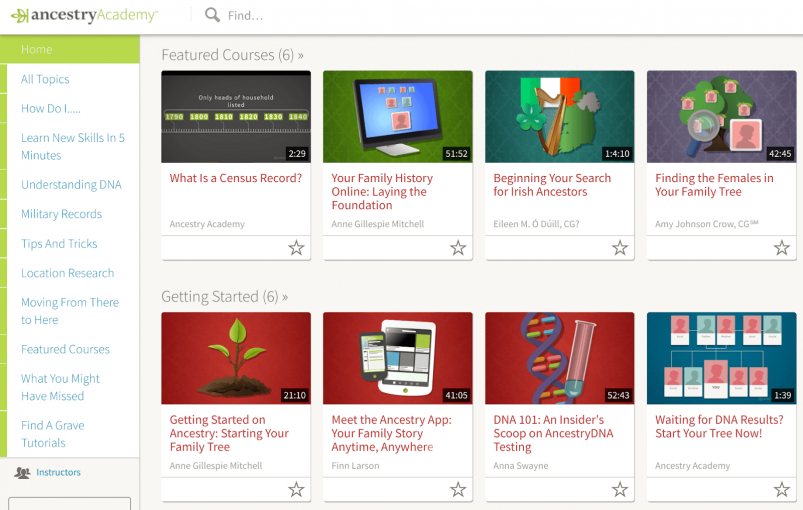
How much does AncestryDNA cost? It costs about the same as its competitors but you get a bigger database and 99% accuracy. So, it’s better value for money. However, remember that you’ll need to pay an additional subscription fee if you want to access the company’s full genealogy services.
AncestryDNA’s value-added customer experience features:
- The Ancestry Academy provides a great deal of educational resources
- Customer community and message boards
- Ability to consult with an expert
- Variety of ways to interact with your results
Which Company Will Best Reveal Your Ancestry?
Our overall winner, AncestryDNA, will be your best bet in most scenarios. However, if you’re looking specifically for sub-regional detail about your African, British Isles, or European ancestry, in which case you should look at Living DNA. Another exception is if you are curious about your ancient ancestors’ migrations or haplogroups.
And if you’re wondering if anyone has had problems with the AncestryDNA test, you won’t find many customer complaints, so you can be assured you’re in safe hands.
Having looked at Living DNA vs. AncestryDNA, you might be interested to learn how AncestryDNA itself stands up against other companies. Check out our articles MyHeritage vs. AncestryDNA and 23andMe vs. AncestryDNA.
| Living DNA | AncestryDNA | |
| Ethnicity Estimate in Percentages | ✔️ | ✔️ |
| Geographical Regions | 150 | 500+ |
| Regional Specialities with detailed sub-regions | ✔️ | ✔️ |
| Maternal and Paternal Lineage Testing | ✔️ | ❌ |
| Haplogroup Assignments | ✔️ | ❌ |
| Migration Mapping | ✔️ | ✔️ |
| Family Tree Builder | ❌ | ✔️ |
| Historical Database | ❌ | ✔️ |
| DNA Matching | ✔️ | ✔️ |
| Relative Finder | ✔️ | ✔️ |
| Easy-to-use, informative website | ✔️ | ✔️ |
| Price | $124.00 | $99.00 |
| Value | Good | Good |
| Customer Support | ✔️ | ✔️ |
| Customer Education | ✔️ | ✔️ |
| Customer Community and Message Boards | ❌ | ✔️ |
FAQs
Which vendor is less expensive: Living DNA or AncestryDNA?
Generally speaking, both companies are similarly priced. Living DNA does tend to be slightly less expensive with sales or promotional pricing. Keep in mind, with Living DNA you won’t have the opportunity to build a family tree, but you will get more information about your ancient ancestry. If you are particularly interested in building a family tree or accessing AncestryDNA’s huge genealogy database, you will have to pay an additional subscription fee.
Who should choose Living DNA over AncestryDNA?
If you have ancestors from Africa, Germany, or the British Isles, you may want to choose Living DNA over AncestryDNA, since Living DNA specializes in these areas. For example, Living DNA has 72 African sub-regions while AncestryDNA only has nine. Living DNA also has 21 sub-regions just from the British Isles. The other big reason to consider Living DNA is if you are particularly interested in exploring your ancient ancestry and learning about your haplogroups.
Who should choose AncestryDNA over Living DNA?
If you are interested in building a family tree you should choose AncestryDNA over Living DNA. Living DNA does not offer a family tree building option. Other reasons people may favor AncestryDNA include access to the massive historical archives and DNA matching databases. However, keep in mind that not all of these services are included with a DNA testing kit, you may have to pay a subscription fee if you want full access to these offerings.
What features does Living DNA provide that AncestryDNA does not?
Living DNA provides haplogroup assignments as well as maternal and paternal lineage testing. Living DNA is able to provide this information because of it’s 3-in-1 DNA test that analyzes autosomal, Y-, and mt-DNA. For comparison, AncestryDNA only tests autosomal DNA, and does not provide haplogroup, maternal, or paternal lineage information.
What features does AncestryDNA provide that Living DNA does not?
AncestryDNA provides extensive family tree building software and maintains the world’s largest historical database. These features help bring your family history to life and connect you with relatives. For comparison, Living DNA does not offer family tree building options and does not maintain a historical database.



